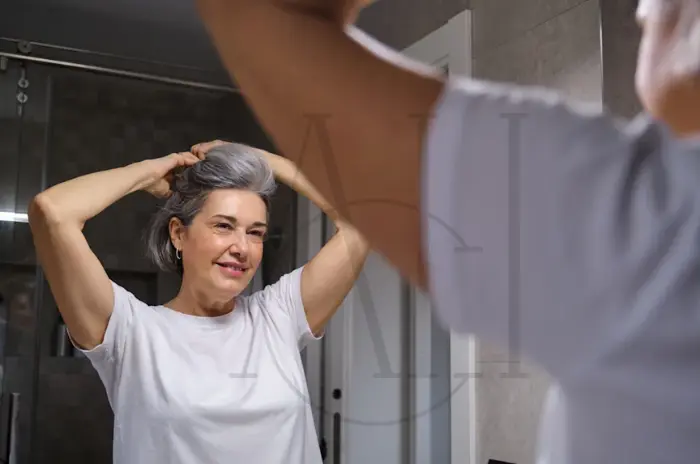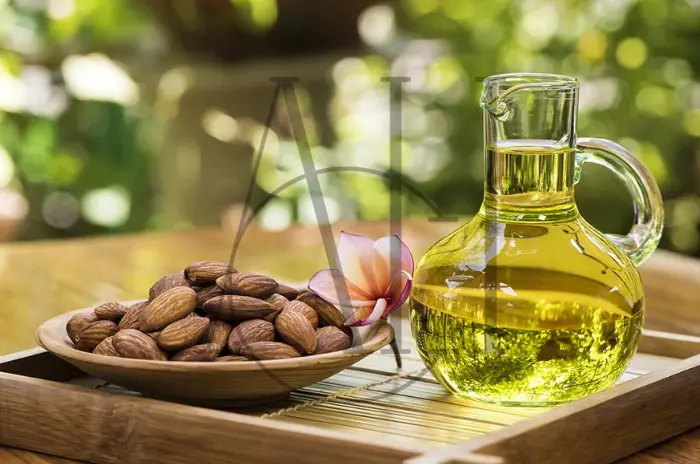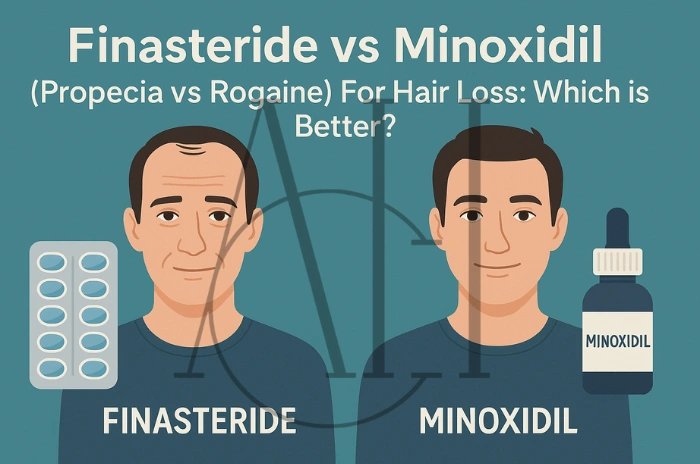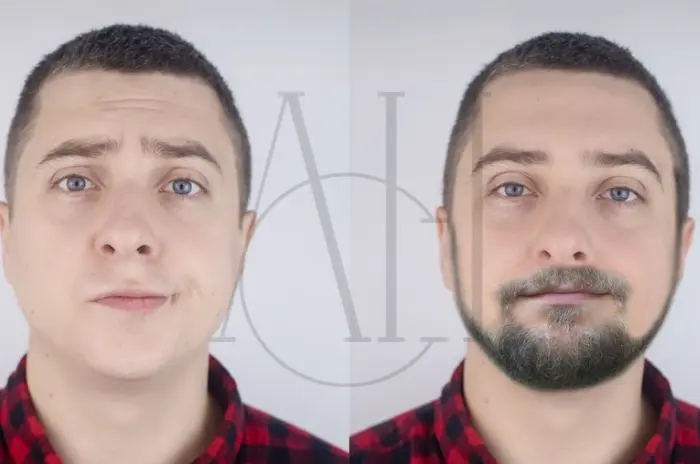Hair loss affects millions of people worldwide, leading many to seek effective solutions for creating the appearance of thicker, fuller hair. Among the various options available, hair fibers have emerged as a popular temporary solution that can instantly transform the look of thinning hair. These innovative products offer a non-invasive approach to hair loss camouflage, providing immediate results without the need for expensive treatments or surgical procedures.
Toppik hair fibers and similar products work by binding to existing hair strands, creating the illusion of density and volume. Unlike permanent hair restoration methods, scalp hair fibers offer a reversible solution that can be applied and removed as needed. This flexibility makes them an attractive option for individuals experiencing various stages of hair thinning, from minor recession to more noticeable hair loss patterns.
Table of Contents
ToggleWhat Are Hair Building Fibers?
Hair building fibers are microscopic synthetic or natural fibers designed to adhere to existing hair strands and the scalp, creating the appearance of thicker, fuller hair. These products typically consist of materials like keratin, cotton, or synthetic polymers that have been processed into tiny particles resembling natural hair fibers. When applied correctly, they blend seamlessly with your natural hair color and texture.
The primary purpose of these hair thickening products is to provide immediate cosmetic improvement for individuals experiencing hair thinning or loss. Unlike hair growth treatments that require months to show results, hair fibers deliver instant visual enhancement. They work by filling in gaps between hair strands and adding volume to areas where hair appears sparse or thin.
How Colored Keratin Fibers Work
Keratin hair fibers represent the premium category of hair building products, utilizing the same protein that naturally occurs in human hair. These fibers are processed and colored to match various hair shades, creating a more authentic appearance than synthetic alternatives. The keratin composition allows for better adhesion and a more natural feel when touched.
The application process involves sprinkling or spraying the colored fibers onto damp or dry hair, where they immediately begin to bond with existing strands. The electrostatic charge created during manufacturing helps the fibers cling to both hair and scalp, filling in visible gaps and creating the illusion of density.
Brands and Color Matching
The market offers numerous brands of hair fibers for thinning hair, with Toppik hair fibers being among the most recognized names in the industry. Other notable brands include Caboki, XFusion, and DermMatch, each offering unique formulations and application methods.
Color-matched hair fibers are crucial for achieving natural-looking results. Most reputable brands offer 8-12 different shades, ranging from black and dark brown to blonde and gray varieties. Professional colorists often recommend purchasing multiple shades to create custom blends that perfectly match your hair color.
Do Hair Fibers Actually Work?
The effectiveness of hair fibers depends largely on the user’s specific hair loss pattern and expectations. For individuals with mild to moderate thinning, topical hair fibers can provide dramatic improvements in hair appearance. These products excel at filling in sparse areas, adding volume to fine hair, and creating the illusion of density where hair still exists but appears thin.
Creating the Illusion of Fuller Hair
The mechanism behind how hair fibers create fuller-looking hair involves several optical and physical principles. When scattered among existing hair strands, the tiny fibers fill in the spaces between hairs, reducing the visibility of the scalp beneath. This effect is particularly pronounced under normal lighting conditions, where the contrast between hair and scalp becomes less noticeable.
Hair loss camouflage through fiber application works by changing the hair-to-scalp ratio in thinning areas. Even a small amount of fiber can significantly alter the visual perception of hair density. The fibers also add texture and dimension to fine hair, making individual strands appear thicker and more substantial than they actually are.
Limitations for Bare or Thin Scalp
While hair fibers offer significant benefits for many users, they have clear limitations when it comes to completely bare or severely thinned scalp areas. Scalp hair fibers require existing hair strands to adhere to effectively. Areas with little to no hair present poor candidates for fiber application, as the products will not stay in place without adequate anchor points.
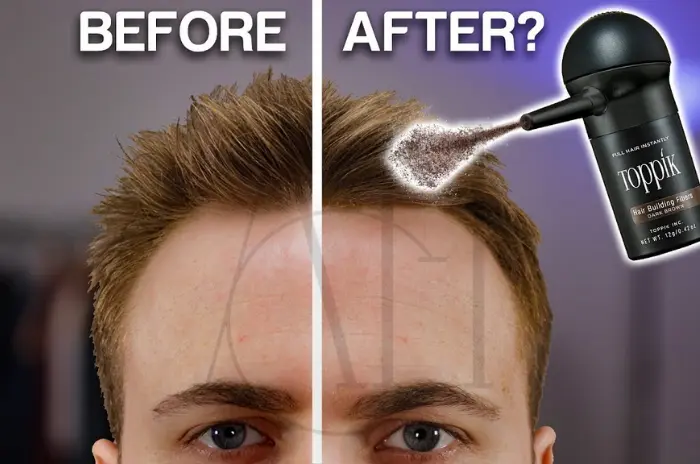
| Feature | Keratin Fibers | Cotton Fibers | Synthetic Fibers |
|---|---|---|---|
| Natural Appearance | Excellent | Good | Fair to Good |
| Adhesion Quality | Superior | Good | Variable |
| Price Range | $$$ | $$ | $ |
| Durability | 8-12 hours | 6-10 hours | 4-8 hours |
| Weather Resistance | Good | Fair | Variable |
| Color Options | 10-15 shades | 8-12 shades | 6-10 shades |
| Removal Ease | Moderate | Easy | Easy |
| Best For | All hair types | Fine to medium hair | Budget-conscious users |
Are Hair Fibers Safe to Use?
Hair fibers for men and women are generally considered safe cosmetic products when used as directed. Most reputable manufacturers use non-toxic materials and conduct safety testing to ensure their products don’t cause adverse reactions. The primary ingredients in quality hair fibers are typically keratin, cotton, or synthetic polymers that have been used safely in cosmetic applications for decades.
Possible Look: Natural vs Fake
The difference between natural and fake-looking results with hair fibers often comes down to application technique, product quality, and realistic expectations. High-quality keratin hair fibers applied correctly can be virtually undetectable, even under close inspection. The key factors that contribute to a natural appearance include proper color matching, appropriate application amount, and even distribution.
Rare Irritation or Itching Reports
While most users tolerate hair fibers well, some individuals may experience mild scalp irritation or itching, particularly during initial use. These reactions are typically attributed to sensitivity to specific ingredients or the physical sensation of having foreign particles on the scalp. Most reported irritations are mild and resolve quickly once the product is removed.
How to Use Hair Fibers Effectively
Effective hair fiber application requires understanding both the product characteristics and proper technique. The process begins with clean, completely dry hair, as moisture can interfere with fiber adhesion and create clumping. Hair should be styled in its final position before applying fibers, as excessive manipulation afterward can dislodge the product.
Applying with Spray or Shaker
Most hair thickening products come with either spray applicators or shaker bottles, each offering distinct advantages for different user preferences and hair types. Spray applicators provide more controlled, even distribution and are particularly effective for covering larger areas quickly. The pressurized application helps distribute fibers more uniformly and can reach areas that are difficult to access with shaker bottles.
Best for Short to Medium Hair
Hair fiber durability and appearance are optimized for short to medium-length hair styles. Hair lengths between 1-4 inches provide the ideal conditions for fiber adhesion and natural blending. Shorter hair stands more upright, creating better structure for fibers to cling to and reducing the likelihood of product migration or fallout throughout the day.
Fibers vs True Hair Loss Treatments
Understanding the relationship between temporary hair solution products like fibers and actual hair loss treatments is crucial for managing expectations and developing effective long-term strategies. Hair fibers provide immediate cosmetic improvement but do not address the underlying causes of hair loss or promote new hair growth.
Fibers Don’t Stop Hair Loss
It’s essential to understand that hair loss camouflage products like fibers are purely cosmetic and do not influence the biological processes causing hair loss. While they excel at improving appearance and confidence, they do not slow the progression of androgenetic alopecia or other forms of hair loss.
Use With Minoxidil or Finasteride
Many users successfully combine temporary hair coverage from fibers with proven hair loss treatments like minoxidil and finasteride. This combination approach provides immediate cosmetic benefits while addressing the underlying causes of hair loss. The fiber application doesn’t interfere with the absorption or effectiveness of topical treatments like minoxidil when proper timing and application techniques are followed.
Choosing the Best Hair Fibers for Thinning Hair
Selecting the right hair fiber concealer requires evaluating several key factors including fiber material, color matching options, application method, and durability characteristics. The market offers numerous products with varying quality levels, making informed selection crucial for achieving satisfactory results.
Top Factors to Consider When Buying Hair Fibers
Color matching accuracy tops the list of critical factors when selecting hair fibers. The product should offer shades that closely match your natural hair color, with options for custom blending if needed. Some manufacturers provide color-matching guides or samples to help ensure accurate selection.
Waterproof vs. Non-Waterproof Hair Fibers
Waterproof hair fibers offer enhanced durability for users who need longer-lasting results or encounter moisture exposure during daily activities. These formulations typically include specialized polymers or treatments that help fibers resist humidity, light rain, and perspiration. However, the enhanced adhesion comes with trade-offs in terms of removal difficulty and potential scalp sensitivity.
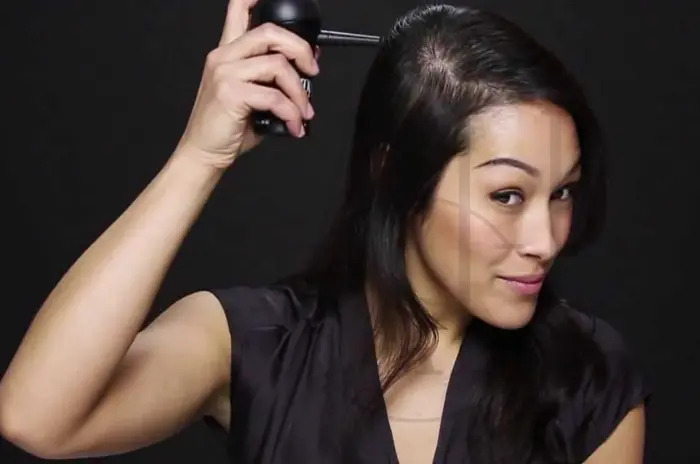
How to Apply Hair Fibers
Proper application technique significantly impacts the final appearance and durability of hair fiber application. The process requires patience and practice to achieve optimal results, with most users reporting improved outcomes after several attempts.
Use on Clean, Dry Hair for Best Hold
Starting with freshly washed, completely dry hair provides the optimal foundation for scalp hair fibers application. Clean hair allows for better fiber adhesion by removing oils, styling products, and environmental debris that could interfere with bonding. The washing process also creates slight texture on hair strands that helps fibers grip more effectively.
Spray or Shake, Then Pat and Seal with Hairspray
The application sequence for topical hair fibers begins with light, even distribution using either spray or shaker methods. Hold the applicator 4-6 inches from the scalp and work in overlapping sections to ensure complete coverage. After initial application, gently pat the treated areas with your fingertips to help settle the fibers and blend them with natural hair.
Pros and Cons of Hair Building Fibers
Hair building fibers offer significant advantages for individuals seeking immediate improvement in hair appearance without invasive procedures or long treatment periods. These products provide instant results that can dramatically boost confidence and self-esteem in social and professional situations.
Benefits of Using Hair Fibers
The primary advantage of hair fiber concealer products is immediate visual improvement that can be achieved in minutes. Users often report dramatic increases in apparent hair density and coverage, with results visible immediately after application. Cost-effectiveness represents another significant benefit, especially when compared to surgical procedures or long-term medical treatments.
Potential Drawbacks of Hair Fibers
Daily application requirements can become tedious for some users, particularly those with busy morning routines or frequent travel schedules. Hair fiber durability limitations mean the products may not withstand vigorous physical activity, swimming, or heavy perspiration.
Not Suited for Severe Baldness
Hair fibers for thinning hair work best when there is existing hair to serve as anchor points for fiber adhesion. Areas of complete baldness or very advanced hair loss may not provide sufficient structure for effective fiber application.
Can Be Messy and Fade in Water or Sweat
Application and maintenance of temporary hair solution products can create cleanliness challenges, particularly during the learning phase when users are developing proper technique. Water exposure presents significant limitations for most hair fiber formulations.
How Long Do Hair Fibers Last?
Hair fiber longevity varies significantly based on product quality, application technique, environmental conditions, and individual scalp characteristics. Under optimal conditions with proper application, quality hair fibers can provide satisfactory coverage for 8-12 hours of normal daily activities.
8–12 Hours of Wear With Proper Application
Achieving maximum hair fiber durability requires attention to application technique, environmental conditions, and maintenance throughout the day. Proper preparation including clean, dry hair and appropriate styling provides the foundation for extended wear.
Impact of Weather, Oil, and Fiber Spray
Weather conditions directly influence hair fiber longevity and performance throughout the day. High humidity can cause fiber migration and reduced adhesion, while extremely dry conditions may lead to static buildup and uneven distribution.
What Side Effects Can Hair Fibers Cause?
Hair fibers for men and women are generally well-tolerated, but some users may experience side effects ranging from mild irritation to more significant allergic reactions. Most adverse effects are temporary and resolve quickly once the product is removed and proper scalp hygiene is restored.
Scalp Irritation, Blocked Follicles, Allergies
Scalp irritation represents the most frequently reported side effect of hair fiber use, typically manifesting as mild itching, redness, or sensitivity in treated areas. This irritation often results from the physical sensation of having foreign particles on the scalp or from individual sensitivity to specific ingredients.
Dryness and Residue From Buildup
Inadequate removal of scalp hair fibers can lead to product buildup that affects scalp health and subsequent applications. Accumulated residue may cause scalp dryness, flaking, or irritation as natural skin processes become impaired.
Why Choose Hair Fibers?
Hair thickening products like fibers offer unique advantages for individuals seeking immediate improvement in hair appearance without committing to medical treatments or surgical procedures. The combination of instant results, reversibility, and relative affordability makes them attractive options for many people dealing with hair thinning concerns.
Quick Confidence Boost Without Treatments
The immediate nature of results from hair loss camouflage products provides psychological benefits that can be significant for individuals struggling with hair loss-related confidence issues. Within minutes of application, users can see dramatic improvements in hair appearance that may take months or years to achieve through medical treatments.
Non-invasive, Easy-to-Use Daily Solution
Hair fiber application requires no medical procedures, prescriptions, or specialized equipment, making it accessible to virtually anyone dealing with hair thinning. The learning curve is relatively short, with most users achieving satisfactory results within a few attempts.
Choosing the Right Hair Fibers
Selecting appropriate hair fiber concealer products requires careful evaluation of individual needs, hair characteristics, and lifestyle factors. The market offers numerous options with varying quality levels, formulations, and price points.
What to Look for in Quality Hair Fibers
Quality keratin hair fibers should demonstrate several key characteristics that distinguish them from inferior products. The fiber texture should feel soft and natural when touched, closely resembling the feel of human hair rather than synthetic or rough materials.
Waterproof vs Regular Hair Fibers: Which is Better?
Waterproof hair fibers offer enhanced durability for users who need extended wear time or encounter moisture exposure during daily activities. Regular hair fiber formulations provide adequate durability for most daily activities while offering easier application and removal.
FAQ : Hair Fiber Benefits How They Create Fuller Looking Hair
What exactly are hair building fibers and how do they work?
Hair building fibers are microscopic synthetic or natural fibers that electrostatically bind to existing hair strands and the scalp, creating the appearance of fuller, thicker hair by filling in gaps between hairs and adding visual density to thinning areas.
Do hair building fibers truly make hair look fuller, or is it obvious they're being used?
When applied correctly with proper color matching, quality hair fiber concealer products can create very natural-looking results that significantly increase apparent hair density without being obviously detectable.
Are hair building fibers safe to use, and can they cause side effects?
Scalp hair fibers are generally safe for most users, with the most common side effects being mild scalp irritation or itching in sensitive individuals.
How should I apply hair building fibers for the best results?
For optimal hair fiber application, start with clean, completely dry hair, apply fibers in light, even layers using spray or shaker methods, gently pat to blend, and seal with light hairspray.
How long do hair building fibers typically last on the hair?
Hair fiber durability typically provides 8-12 hours of acceptable coverage under normal conditions, though wear time can be affected by weather, physical activity, and natural oil production.
Can hair building fibers be used in conjunction with hair loss treatments like Minoxidil or Finasteride?
Hair fibers for thinning hair can be safely combined with medical treatments like Minoxidil and Finasteride, though users should allow adequate absorption time for topical medications before applying fibers.
What are the main advantages and disadvantages of using hair building fibers?
Hair building fibers offer immediate visual improvement, cost-effectiveness, and versatility, while drawbacks include daily application requirements, limited durability with moisture exposure, and reduced effectiveness for severe baldness.
What should I look for when choosing quality hair building fibers?
When selecting keratin hair fibers, prioritize accurate color matching, strong adhesion properties, natural texture and feel, consistent quality control, and formulations appropriate for your lifestyle needs.

